Last Fall, George Washington University law professor Orin Kerr reported on the Volokh Conspiracy blog that a biography was being written about Judge Henry Friendly, a nationally renowned judge of the U.S. Court of Appeals for the Second Circuit, on which he served from 1959 to 1986. I have a review copy of that book on my desk; it will be published by Harvard University Press next month (March 26, 2012): Henry Friendly: Greatest Judge of His Era by David M. Dorsen.
I received my copy early because I was one of the manuscript readers, at the request of the author. I found myself in the company of other readers far more qualified than myself, such as U.S. Supreme Court Justices Stephen Breyer and Antonin Scalia—to mention only a few. I am confident that all the readers will agree that David Dorsen has produced a significant piece of work, which not only illuminates the life, work, and legacy of a great jurist, but also provides readers (both inside and outside the legal profession) with a better understanding of the workings of the federal circuit courts of appeal, which have the last word on most federal cases, as the Supreme Court takes up comparatively few.
I noticed that the first question in the comments after Professor Kerr’s Volokh Conspiracy post raised a question that was on my own mind as I read the manuscript: How will this first biography of Friendly deal with his suicide? For anyone familiar with this judge, it is a natural question. It is not an easy subject, so allow me to provide some insights about the book.
This is not a book review. Others should and will pen such reviews. Rather, this is my effort to call attention to a job well done, a fascinating read about a jurist whose legal acumen and insights notably influenced American law.
Six Years of Serious Scholarship
Because David Dorsen is a friend of mine, I was aware that he was working on the Friendly biography. Knowing him, I knew he would do a first-rate job, but judicial biographies are difficult, and the standard for success had been set very high by biographers like Stanford law professor Gerald Gunther, who received high praise for his work Learned Hand: The Man and the Judge (2010).
If Gunther set the gold standard for judicial biographies, Dorsen has now gone for platinum with his work on Friendly. Indeed, if there exists for judicial biographers the equivalent of the level of play that we see in the NBA, we might draw a parallel between Dorsen and, say, a Jeremy Lin.
Until I read Dorsen’s manuscript, I had no idea that he had not only read and studied all of Judge Friendly’s 1,056 published opinions, as well as all of his lectures, articles, book reviews, and correspondence, along with the briefs the judge studied before ruling on many of the cases, but also talked with virtually everyone who had firsthand knowledge about Friendly. David was not studying what Friendly decided in given types of cases on the bench; rather, he wanted to learn how Friendly reached his decisions, given the impact that many of his rulings have had on other courts and on the law.
To understand Judge Friendly’s thinking, David did more than 250 interviews, speaking with other federal circuit court judges who knew and worked with Friendly; federal district court judges whose work Friendly had reviewed; and even with parties from cases on which Friendly had ruled.
To learn Friendly’s personal story, as well, David talked with the judge’s family, friends and acquaintances, and most importantly, three of his private secretaries, and all fifty-one of his law clerks (fifty in person, and one by telephone). Judge Friendly’s law clerks are something of a Who’s Who of American law today, with many going on to serve as Supreme Court law clerks and becoming judges themselves, and, with a former Friendly clerk, John Roberts, now serving as Chief Justice of the United States.
The Biography’s Remarkable Foreword by Judge Richard Posner
One of the circuit court judges with whom Friendly had extensive correspondence was the prolific author and public intellectual Judge Richard Posner of the U.S. Court of Appeals for the Seventh Circuit. For that reason, David interviewed Posner to discuss his relationship with Friendly, and Posner’s thoughts regarding his work.
David knew, when he approached Posner, that Posner was no fan of judicial biographies. For example, when New York University Law School held a conference in May 1995 on the subject of judicial biography, Posner told those assembled that he questioned the purpose of the entire genre. Nonetheless, when David was looking for readers to critique his work, he inquired as to whether Posner might be interested in taking a look. The judge agreed, probably reluctantly.
To both Judge Posner’s and David’s surprise, David’s work on Friendly caused Posner to do a 180-degree turn on judicial biographies. In the extraordinary foreword he has written for the book, which I will not spoil for readers, Posner explains why he had become disenchanted with the genre in general, and why he would “have thought a biography of Friendly an unpromising venture.” Yet he admits, rhetorically: “Was I wrong!” Then Posner explains why “David Dorsen’s biography is immensely illuminating.”
As Posner notes, David’s work sets forth “what made Judge Friendly tick and in what lay the distinctiveness and distinction of Friendly’s career.” But Posner also felt bound to discuss Friendly’s suicide, for Friendly had mentioned suicide in a last meeting with Posner.
How Has Friendly’s Biographer Handled the End of the Story?
David laid out the narrative skillfully. The early chapters move chronologically and quickly through Friendly’s childhood; his years at Harvard, at Harvard Law and in private practice; and his nomination and confirmation to the U.S. Court of Appeals for the Second Circuit. The pace then slows, to explain how Friendly prepared himself to become a judge after he was nominated. David also provides an overview of how Friendly operated as a judge, including how he selected and worked with law clerks, and his relationship with other judges and justices. Before turning to an examination of his legal thinking, the narrative looks at Friendly’s life outside the courthouse, his relationships with his family and friends. This material is presented in the first nine chapters.
Then, Friendly’s legal thinking and influence on the law are explored in Chapters 9 (on the First Amendment); 10 (on the Fifth Amendment); 11 (on Other Bill of Rights Amendments); 12 (on Other Constitutional Provisions); 13 (on Habeas Corpus); 14 (on Nonconstitutional Criminal Procedure); 15 (on Specific Crimes); 16 (on Business Law); 17 (on Intellectual Property); 18 (on Management and Labor); 19 (on Railroad Reorganization); 20 (on Administrative Law): 21 (on Common Law and Federal Common Law); 22 (on Federal Court Jurisdiction); and 23 (on Other Procedural Issues).
David has written this material in a non-technical fashion, in order to make the information accessible to the general reader, as well as those trained in the law. Given the timeliness with which this biography has been written, Friendly’s influence in these areas of law still remains important.
In Chapters 23 (At the End) and 24 (Friendly’s Legacy), David completes the narrative. Given David’s access to, and the cooperation of, Friendly’s family and friends, David was able to fully reconstruct why and how Judge Friendly took his own life on March 11, 1986 at 82 years of age. This subject is handled thoughtfully, openly and completely. By the time you reach these last chapters, it certainly is not a surprise.
It appears that it was Friendly’s New York Times obituary, with its extraordinary praise, that gave David his subtitle: Chief Judge Feinberg of the U.S. Court of Appeals for the Second Circuit called Friendly “one of the greatest Federal judges in the history of the federal bench,” and Judge Posner described him as “the greatest federal judge of his time—in analytic power, memory, and application, perhaps in any time.” It would be difficult to find better authority for describing Friendly as the greatest judge of his era.







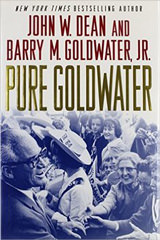
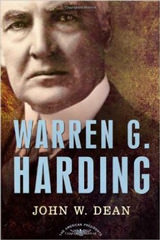



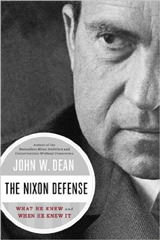
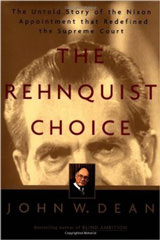
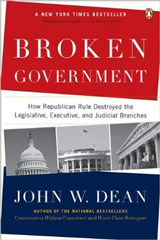
Sounds like a compelling read!
I met Judge Friendly toward the tale end of an infamous case involving a lawyer, Elicofon, who bought two Durers after WWII from a discharged soldier. The points of law often involved referring questions to the NYS Court of Appeals. The final oral argument involved standing, a thorny question because the real plaintiff, East Germany, was not recognized for a long time; so who could properly sue and under what theory would the statute of limitations come into play? Our lead counsel was the fine and also elderly Harry Rand. Judge Friendly had so devolved physically that he could not be seen over the bench. But he as usual spoke with brilliance and Harry parried, two intellectual friends playing chess. At last, he said, Harry, after twelve years of this back-and-forth, why shouldn’t we just dismiss and let you begin anew in state court? Harry, tall, thin, thinned pale lips, said, Judge, if we do not resolve the case here and now, neither you nor I will know the end. — And so it was resolved.
I am honored to be included in this wonderful biography of the great Judge Friendly, just as I was honored to know him and, over time, to share a close relationship. Thank you, David Dorsen!